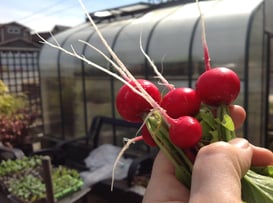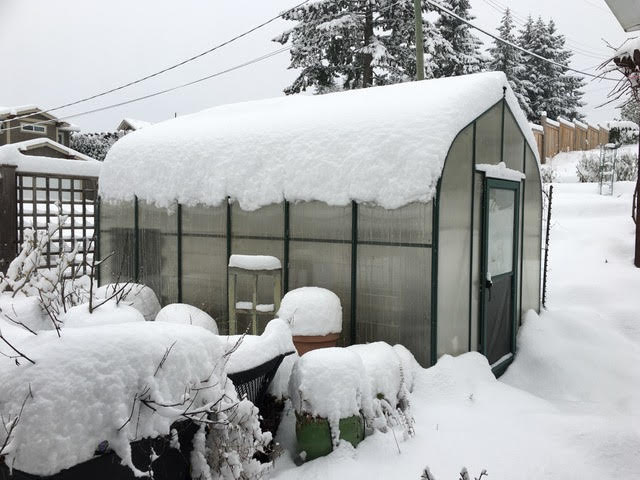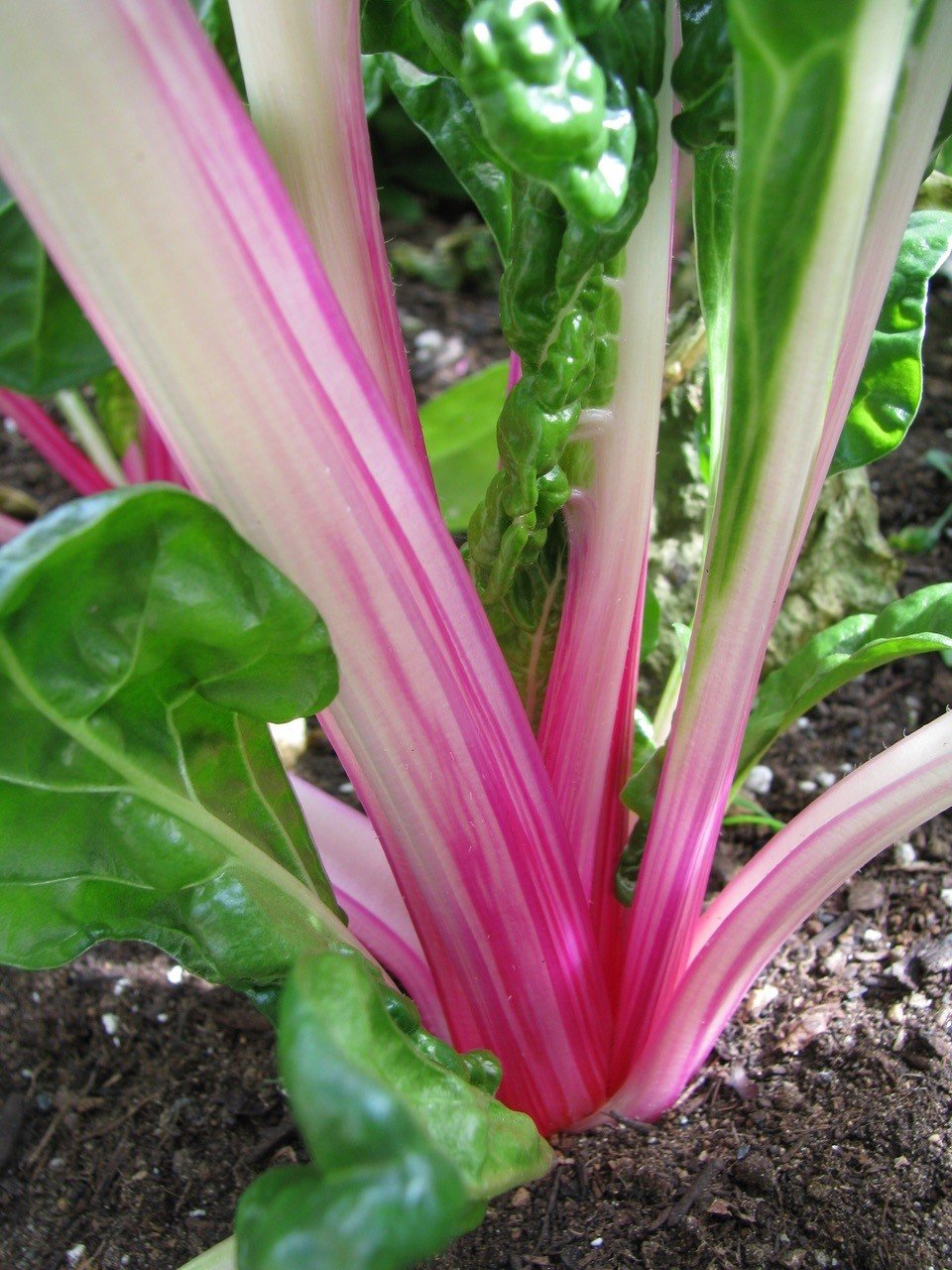Summer Prep for Winter Greenhouse: Tips for Managing & Double Cropping

Surprisingly, Summer is the perfect time to prep for winterization
 Managing your winter greenhouse with crops coming and going is a bit of an art form, so please bear with me. It involves starting seeds directly in greenhouse soil and also starting seeds in flats on shelves or potting benches.
Managing your winter greenhouse with crops coming and going is a bit of an art form, so please bear with me. It involves starting seeds directly in greenhouse soil and also starting seeds in flats on shelves or potting benches.
I love eating crisp red radish roots in spring and they only take a month to grow. But they are only perfect for 2-4 weeks and then they get woody and have to be re-seeded. Pick them or perish is the rule with these fast-growing plants.
 I love eating from my greenhouse and planning what to grow as seasons change. Plants like tomatoes stay in place from spring to fall but other quick-growing plants like lettuce, beans, radish, zucchini and green onion come and go.
I love eating from my greenhouse and planning what to grow as seasons change. Plants like tomatoes stay in place from spring to fall but other quick-growing plants like lettuce, beans, radish, zucchini and green onion come and go.
For instance, I plant zucchini twice. I plant inside the greenhouse in early spring when natural solar heating means they grow huge almost instantly. Then a second crop is started outside in early June when the outdoor soil is warm. I also start beans and peas both inside and outside soil is warm. I am eating fantastic tiny squash and perfect Jade Organic French beans right now but I am also planning to pull these plants out of my greenhouse shortly. Why?
Well, zucchini really produce in summer so when the outdoor plants start pumping out squash in early July, I'll pull out the greenhouse plants to make space for fall and winter crops indoors.
I grow beans inside because I love early beans but also because they are a trap crop for spider mites. If spider mites happen into my greenhouse, I'll see them first on my beans instead of my slower growing, more valuable cucumbers.
I'll keep picking fresh beans until I see mites or until the end of July when the outside plants provide plenty of food. If I do have spider mites, I'll pull the plants earlier than planned, immediately stuff them in garbage bags and order the beneficial bug Persimilis online to set out on my tomato and cucumber plants.
 So right now, while the outdoor plants are young and the indoor plants bountiful, I am eating food like crazy! Peas planted on the same day outside as they were inside are already producing edible peas. Again, when the peas are plentiful outside, I remove the plants growing inside to make room for fall and winter crops.
So right now, while the outdoor plants are young and the indoor plants bountiful, I am eating food like crazy! Peas planted on the same day outside as they were inside are already producing edible peas. Again, when the peas are plentiful outside, I remove the plants growing inside to make room for fall and winter crops.
Double Cropping:
Fast growing plants like radish seed can be started every time there is an opening in the greenhouse especially around slow growing plants like peppers. When I transplant my peppers, they are small compared to the space available. In the 4-6 weeks it takes to grow the peppers to a good size, I am also growing and pulling mature radish for eating. By the time the peppers are getting big, the radishes are all gobbled up in salads. Another option is to hold peppers in bigger pots on a shelf in the greenhouse while the early radish crop is seeded, grown and pulled. The, the now large peppers are popped into the same space.
Keep Young Seedlings in Flats
Green onions take a week or two to sprout so I lose track of them when seeded directly into the greenhouse soil. A visiting dog ran through my greenhouse last week, broke off a bean plant and carried on after my pooch through the back door. No harm, no foul. I filled that square foot space with ten tiny green onions from flats growing on shelves in my greenhouse. Now I have salad-ready onions growing in my greenhouse soil ready to pick when I am ready to eat.
Planning for Fall and Beyond
Winter hardy plants like Galleon cauliflower, mustard greens, spinach, green onions or leaf lettuce thrive in increasingly cooler fall and winter greenhouses, especially if they are given an extra cover of floating row cover in really chilly climates.
Starting these hardy crops in June for planting when a accident occurs, a plant is deliberately removed, or a crop finishes earlier than expected means you are ready for anything this summer in the greenhouse. It seems ironic but planning for winter while enjoying summer is one way to maximize greenhouse growing.
Tip of the week:
As days get longer, this month's plants are growing like crazy and using lots of minerals and plant food. To make sure there is always nutrient available I sprinkle alfalfa pellets on the soil of plants in the ground and in pots. If plants look stressed and you know they are neither too dry or too wet they could actually just be short on food. They can also be fed by spraying kelp or mixture of kelp and fish fertilizer directly on leaves of plants.


